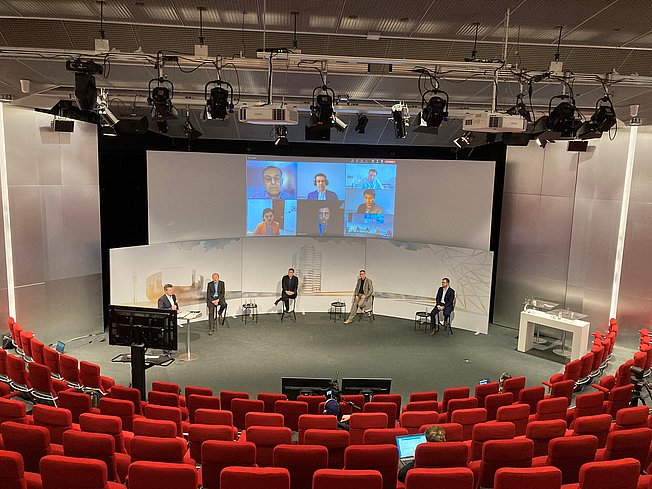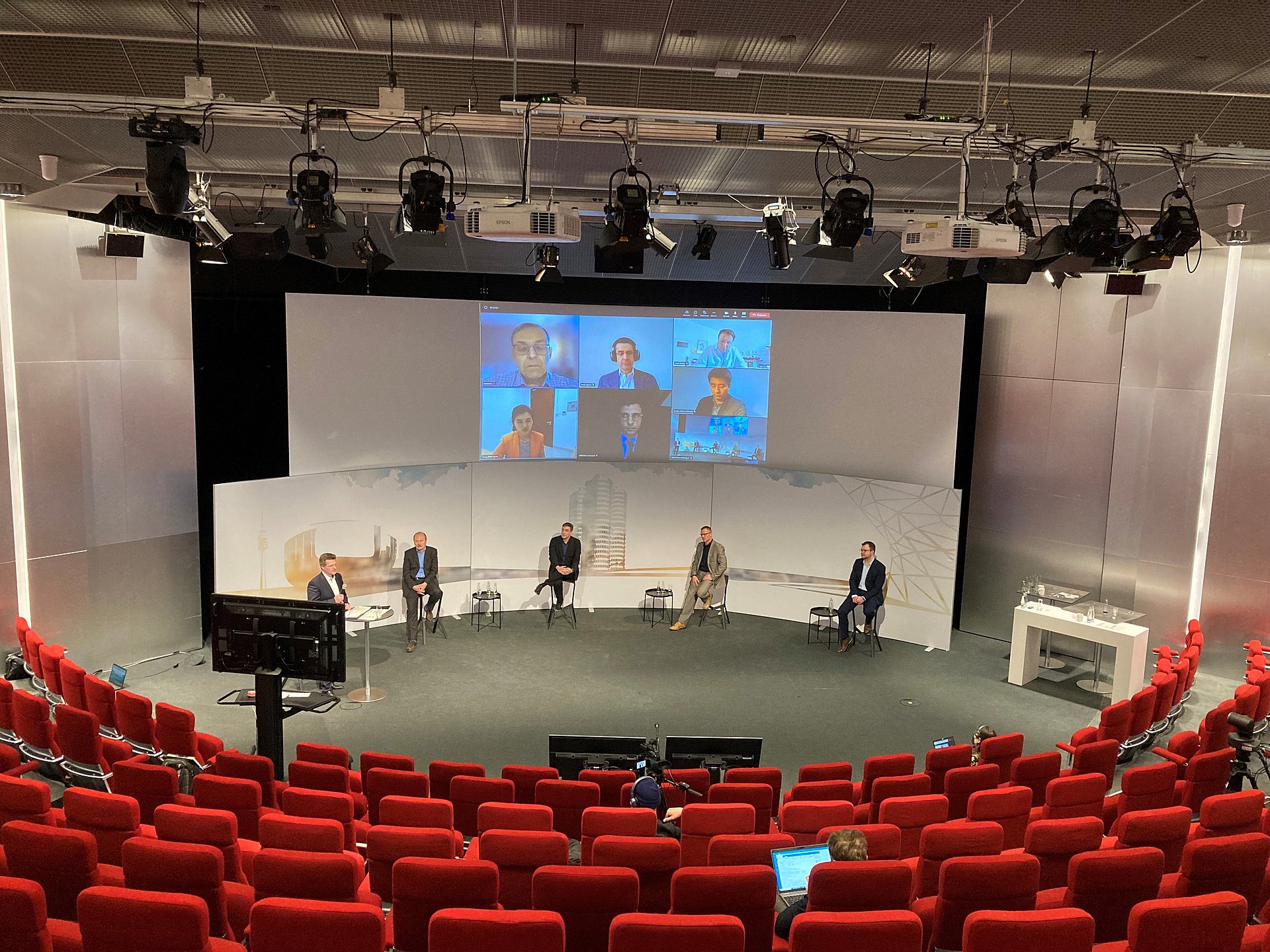VVM’s first results presented at the mid-term presentation
On 15 and 16 March, the VVM project partners presented their first results and methods at the virtual mid-term presentation. The two-day event offered the approximately 760 spectators deep insights into the work around verification and validation of autonomous driving systems in numerous presentations and an associated virtual exhibition.
After a short welcome note by project coordinator Roland Galbas from Bosch, the first day began with greetings by Jochen Balling from BMW as host, Mirko Franke from Bosch as representative of the consortium lead, and Ernst Stöckl-Pukall from the Federal Ministry of Economics and Climate Action (BMWK) as funding body. All emphasized the high relevance of the project, as safe autonomous driving will only be possible if reliable validation and verification methods are in place for these systems. These are precisely the methods that the BMWK-funded VVM project has been developing since the start of the project in 2019. Following the welcoming speeches, the first day of the half-time event accordingly addressed initial results as well as tools and methods developed in the project. First, Ulrich Eberle (Stellantis), Roland Galbas (Bosch), Jan Reich (Fraunhofer), Marcus Nolte (TU Braunschweig) and Helmut Schittenhelm (Mercedes-Benz) gave several presentations, which were broadcast live from the BMW Research and Innovation Center in Munich, giving an overview of the origin of the project, the main approach, the safety argumentation and the methodological approach.
In the afternoon, the guests could choose between three different topics: The first stream dealt with the requirements that test methods must fulfill. Among other things, presentations were given on criticality analysis, ontology and the target behavior of autonomous driving systems. The second stream focused on building verification and validation methods. The presentations in this stream explained, among other things, the orchestration of test methods, the setup and validation of test infrastructures, and scenario-based testing. The third stream explained data processes and tools. The presentations in this stream included the topics data acquisition, simulation and the database used in the project. Thus, the three streams were able to provide a comprehensive and detailed insight into the various work areas and aspects of the project. More in-depth information was provided by the 44 posters, which were available to visitors in separate virtual rooms throughout the event and were also assigned to the three topic areas. All presentations and posters can still be found here on the website: www.vvm-projekt.de/midterm-docs
After the first day had focused on project content, the second day broadened this scope and looked at international perspectives as well as the need for standardization and cooperation. The guest lectures were given by high-ranking international experts: Frank Köster from DLR, Siddartha Khastgir from the University of Warwick, Emmanuel Arnoux from Renault, Xavier Sellart from IDIADA, Steven Shladover from the University of California, Berkeley, Jacobo Antona-Makoshi from the SAKURA project and Hong Wang from Tsinghua University. The presentations provided interesting insights into the approach and methods of other international projects and thus also showed important intersections. These intersections were also the topic of the subsequent panel discussion moderated by Lutz Eckstein (RWTH Aachen). In addition to the guest speakers, Roland Galbas, Ulrich Eberle, Helmut Schittenhelm and Jan Reich from VVM discussed common grounds of the different perspectives, i.e. among other things, the importance of scenario-based testing and the criteria that an autonomous driving system must fulfill in order to be socially accepted and bring an advantage for mobility.
All in all, the 24 presentations, 44 posters as well as the panel discussion, were thus able to get an overall picture of the topic of validation and verification methods to the approximately 760 spectators. The high interest in the topic was also shown by the numerous questions to all presenters. A lot of helpful input was also gathered for the project partners, which will now be incorporated into the further work of the project.

